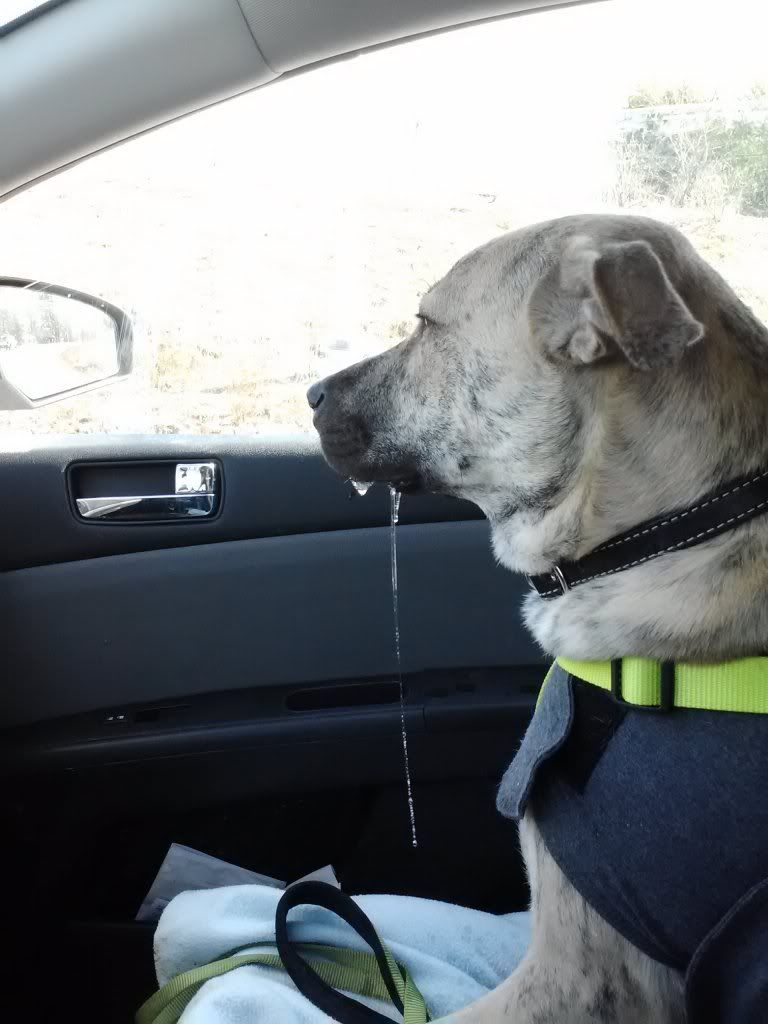We have been enrolled in a dog training class with out newest addition, a blue heeler aussie cattle dog. It is very interesting the way the trainers teach us new tricks. They really are teaching us and not the dog.
One of the things to realize is that every dog needs a job (or in our case LOTS of jobs). They need to know where they stand in the pack and they need to be confident that you are the leader. When they sense their pack doesn't have a leader, they assume that role naturally and we don't always like the decisions they make as pack leader (barking, aggression, etc).
Training will be constant, not just during class, but it can be fun too. One of the things we are working on right now is overcoming fears and anxieties that the various dogs in our class have, whether it be people, other dogs, or noises. This is accomplished in stages, as are most things in life.
If you know your dog gets anxious riding in the car, it may be beneficial to work on making the car a place where good things always happen. Have him jump in the car and come right back out and get a treat for just that. If the dog will stay, work on slowly increasing the time while not raising stress levels too high. Make a game out of it and quit before the dog is too anxious or bored. Small pieces of cheese or chicken as rewards may work if your dog is food motivated.
If your dog reacts to certain things, make a list of what they are so that your trainer will have a better idea of your dogs issues as a whole. We are currently working with mat training, where we get the dog to come to the mat and sit. Good things always happen on the mat and rewards are coming regularly so we have the dogs attention. We are incorporating things like stepping back from the mat and then forward again and treating if they stay, without giving the stay command. This results in a sit stay being the default behavoir for "Mat" rather than having to give "Mat, Sit, Stay". We are including walking two steps this way and that, and a gentle clap every now and then. Staying on the mat while people walk by, turning to look at them and then instantly getting a "Good Dog" and a treat. They are encouraged to stay on the mat and turn their attention back to you, and every time a stranger approaches good things happen. This builds confidence not only in the dogs ability to deal with strangers, but other new situations too where the dog will get praise for noticing a new stimuli before he has a chance to build a fear of it.
Small steps but they are important. I recommend a book by Patricia McConnell called The Other End of the Leash It is a great book and helps define the relationship between you and your dog better. If you haven't already checked it out, give it a read and see if it helps.
Sorry for the long post. Good Luck! 
 This is while wearing one of those Thundervests which actually does help - you should see the drool he would generate before we got him the vest!
This is while wearing one of those Thundervests which actually does help - you should see the drool he would generate before we got him the vest!











































